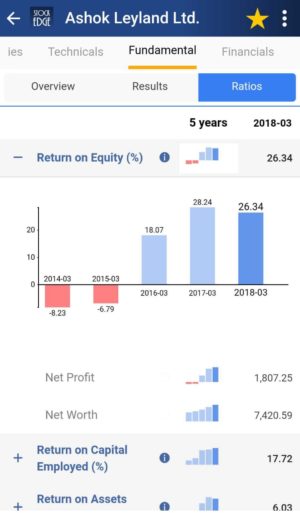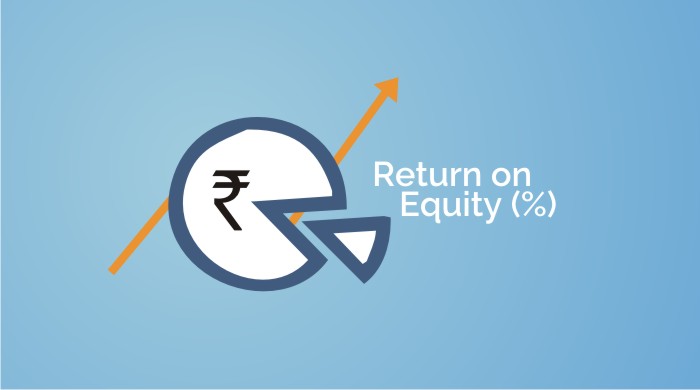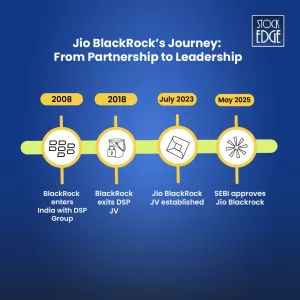Table of Contents
Why Return on Equity is important?
Financial ratios are important parameters which helps investors to decide on their investment. Any ratios are important in their own manner for different kind of Financial analysis. A financial ratio is a representation of selected numerical values from a company’s financial statements. Financial ratios help in deciding the valuation strength of the company. There are a lot of ratios such as PE ratio, Net profit margin, interest coverage ratio etc used for valuation analysis of a company. We will discuss about the impact of Return on Equity ratio.
Return on Equity or RoE is another kind of financial ratio which unearths the efficiency with which the management is utilising Shareholders funds. It measures the ability of a firm to generate profits from its shareholders investments in the company. In other words, the return on equity ratio shows how much profit each dollar of common stockholders’ equity generates. So a return on 1 means that every rupee of common stockholders’ equity generates 1 rupee of net income.
You can also watch the video below on Everything you want to know about Return on equity (ROE):
What is Return on Equity (ROE)
The Return On Equity ratio essentially measures the rate of return that the owners of common stock of a company receive on their shareholdings. Return on equity signifies how good the company is in generating returns on the investment it received from its shareholders.
Importance of ROE :
- Sound financial framework
- Analysis of the company’s financial growth
- Comparison with peer companies
- Determination of growth rates of a company
- Recognition of financial discrepancies
The formula for calculating the ratio is mentioned below –
ROE = Net Income/Shareholder’s equity
See also: Price to Earnings Ratio (PE Ratio)
Impact of Return on Equity
This is an important measurement for potential investors because they want to see how efficiently a company will use their money to generate net income. ROE is also and indicator of how effective management is at using equity financing to fund operations and grow the company.
Exceptions
The return on equity of different companies from different sectors cannot be compared since it shows a major variation. Hence the formula is restricted to different companies under the same sector. If we compare between sectors it will show a major aberration.
A high ROE might not always be positive. A very high ROE can be indicative of a number of issues—such as inconsistent profits or excessive debt. Also, a negative ROE due to the company having a net loss or negative shareholders’ equity cannot be used to analyze the company, nor can it be used to compare against companies with a positive ROE.
Return on Equity Formula (ROE Formula)
The Return on Equity can be calculated as: Net Income/Shareholder’s equity.
Suppose a company A’s net profit is Rs 5 crore. Its share capital is 15 crores and its reserves and surplus is 10 crores, then its return on equity is 5/(15+10)= 20%
StockEdge App
Nowadays we don’t have to calculate RoE on our own. StockEdge gives us RoE of the last year of any company listed in the stock exchange. We can look and compare RoE of any company and filter out stocks accordingly.
Suppose we want to look at the RoE of Ashok Leyland of last year. In the Fundamental tab of Ashok Leyland, click on the fundamentals tab, we will get Ratios tab. Then in the Ratios tab click on Return Ratios, and we get the RoE in miniscule of a second.

Bottomline
Return on equity is an important parameter to measure how efficiently is the company utilising its assets to generate returns. These ratios are freely available in StockEdge app with every stock. We also have scans based on RoE, with the help of these ready-made scans you can with the click of a button filter out good companies. So what are you waiting for? If you still do not have the StockEdge app, download it right now to use this feature. It is a part of the premium offering of StockEdge App.
Join StockEdge Club to get more such Stock Insights.
You can check out the desktop version of StockEdge.









My knowledge is stockedge only.
Thank you stockedge team.